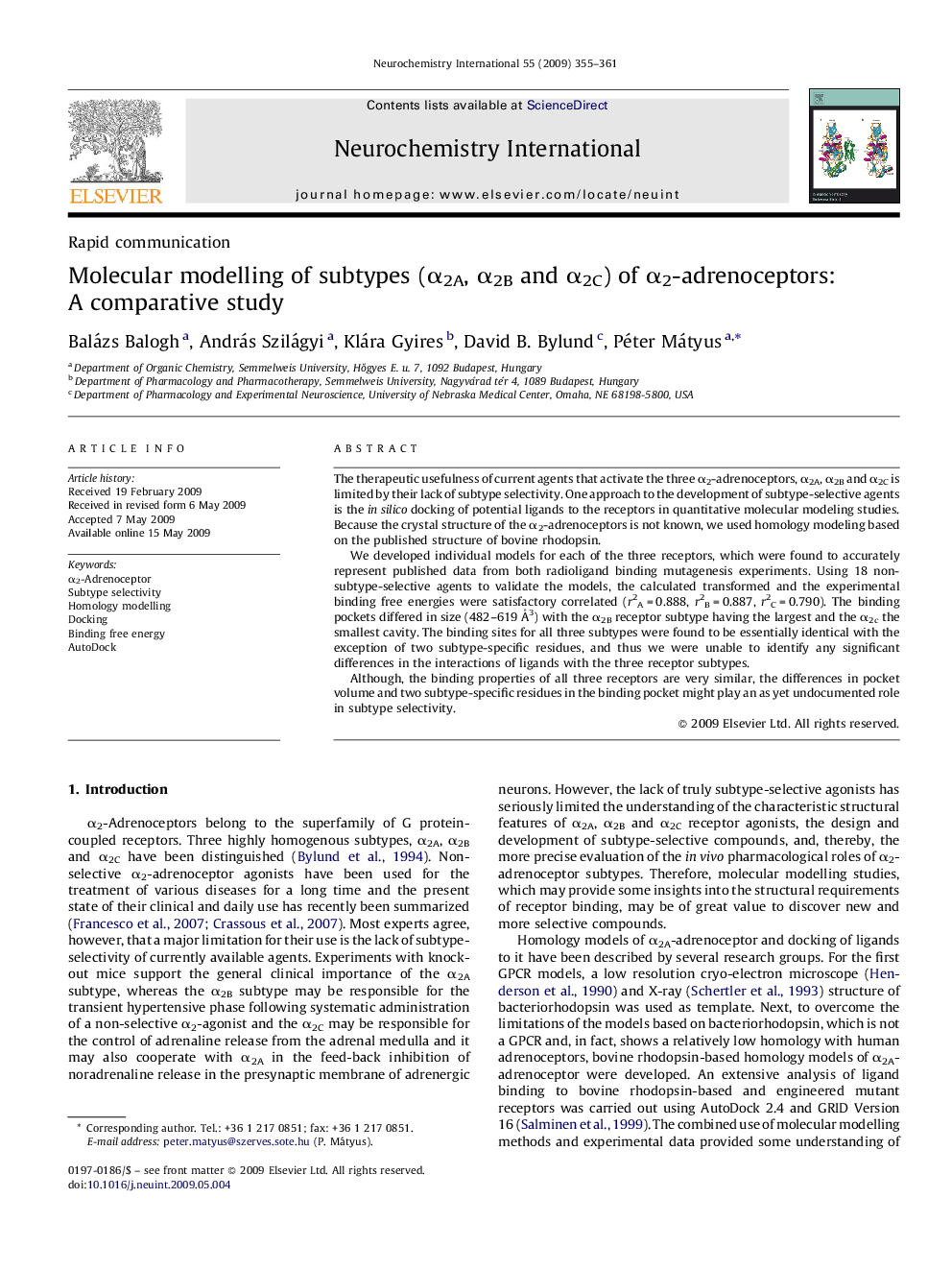| Article ID | Journal | Published Year | Pages | File Type |
|---|---|---|---|---|
| 2201653 | Neurochemistry International | 2009 | 7 Pages |
The therapeutic usefulness of current agents that activate the three α2-adrenoceptors, α2A, α2B and α2C is limited by their lack of subtype selectivity. One approach to the development of subtype-selective agents is the in silico docking of potential ligands to the receptors in quantitative molecular modeling studies. Because the crystal structure of the α2-adrenoceptors is not known, we used homology modeling based on the published structure of bovine rhodopsin.We developed individual models for each of the three receptors, which were found to accurately represent published data from both radioligand binding mutagenesis experiments. Using 18 non-subtype-selective agents to validate the models, the calculated transformed and the experimental binding free energies were satisfactory correlated (r2A = 0.888, r2B = 0.887, r2C = 0.790). The binding pockets differed in size (482–619 Å3) with the α2B receptor subtype having the largest and the α2c the smallest cavity. The binding sites for all three subtypes were found to be essentially identical with the exception of two subtype-specific residues, and thus we were unable to identify any significant differences in the interactions of ligands with the three receptor subtypes.Although, the binding properties of all three receptors are very similar, the differences in pocket volume and two subtype-specific residues in the binding pocket might play an as yet undocumented role in subtype selectivity.
